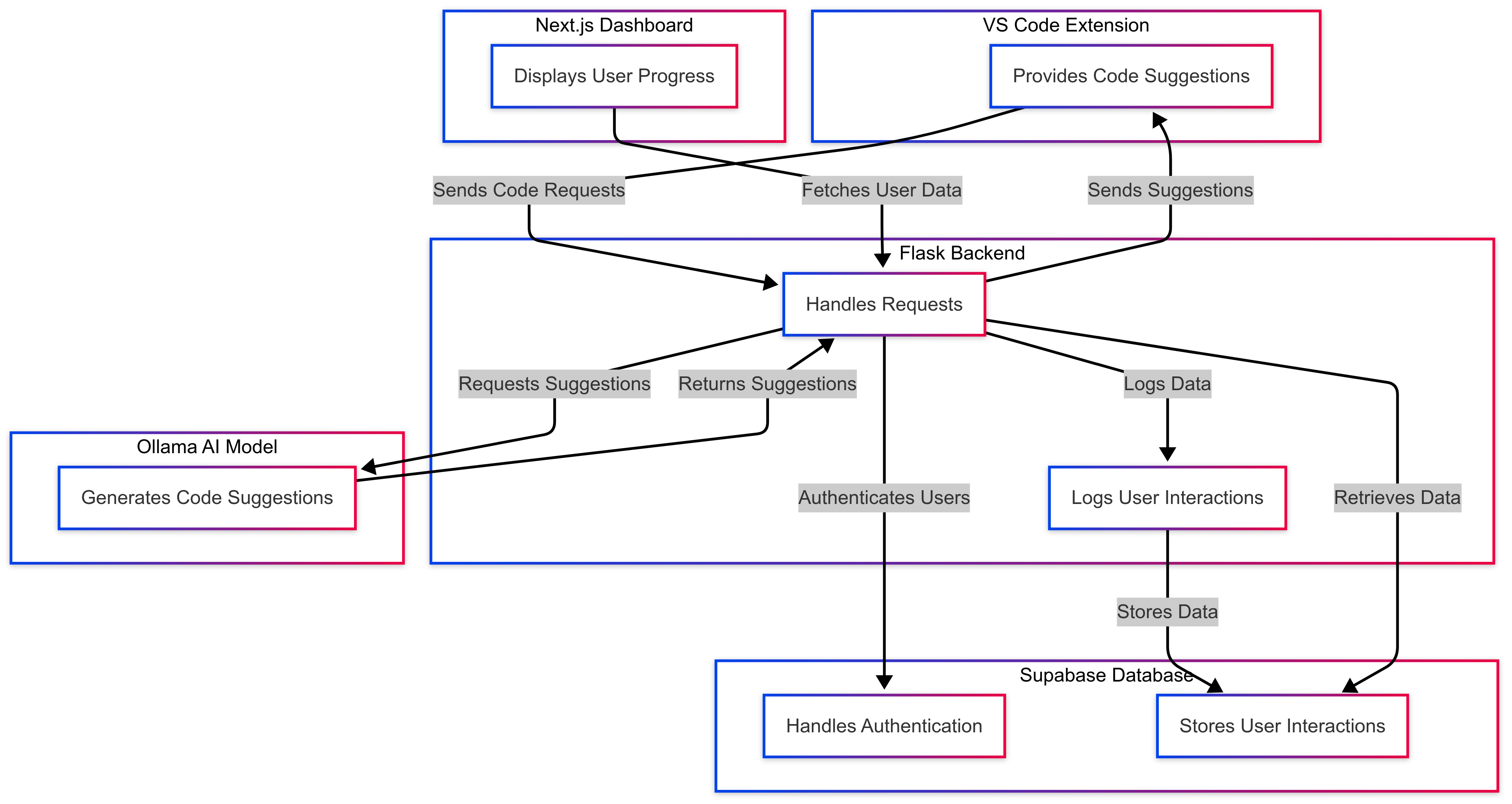Component Overview
The AI-assisted coding assistant project consists of several key components and technologies, including a VS Code extension for code suggestions, a Flask backend for processing and logging user interactions, Ollama as the AI model, Supabase for authentication and database storage, and a Next.js dashboard for users to track their progress.

Figure 1. Component Diagram of the Github Copilot Clone application.
Main Application
🛠 VS Code Extension (TypeScript, Node.js)
The core of the system is a VS Code extension that provides code suggestions while occasionally introducing small logic errors to test user attentiveness.
🔹 Key Features:
- AI-Powered Code Suggestions – Uses Ollama to generate helpful code recommendations.
- Bug Injection – Sometimes modifies code (e.g., changing
add(a, b)toa - b) to check if users notice mistakes. - User Response Logging – Tracks how users interact with suggestions (accept, modify, or reject).
- Adjustable Difficulty – Adapts suggestions based on past responses.
Backend Services
🌐 Flask (Python)
The backend handles all API requests between the VS Code extension, AI model, and database.
🔹 Key Features:
- Processes Code Requests – Sends user code to the AI model and returns suggestions.
- Tracks User Behavior – Logs whether users accept, modify, or reject suggestions.
- Controls Suggestion Flow – Can slow down suggestions or require manual edits based on user performance.
AI Model
🤖 Ollama (AI Code Generator)
The AI model generates code suggestions and sometimes introduces small mistakes to test users.
🔹 Key Features:
- Context-Aware Suggestions – Provides relevant recommendations based on the user’s code.
- Intelligent Mistakes – Occasionally tweaks suggestions with logical errors to test user focus.
- Adaptive Learning – Adjusts suggestions based on user behavior.
Database & Authentication
🔐 Supabase (PostgreSQL, Auth)
Supabase handles user login and stores all interaction data.
🔹 Key Features:
- User Authentication – Manages logins and keeps track of individual progress.
- Logs User Activity – Records which suggestions were accepted, modified, or rejected.
- Real-Time Sync – Updates and injects user progress instantly to the AI model and on the dashboard.
User Dashboard
📊 Next.js (React, Tailwind CSS)
The dashboard allows users to view their progress and track their learning journey.
🔹 Key Features:
- Progress Tracking – Displays stats on correct vs. incorrect responses.
- Insightful Feedback – Helps users understand where they need improvement.
- Encourages Learning – Provides interactive insights to refine coding skills.